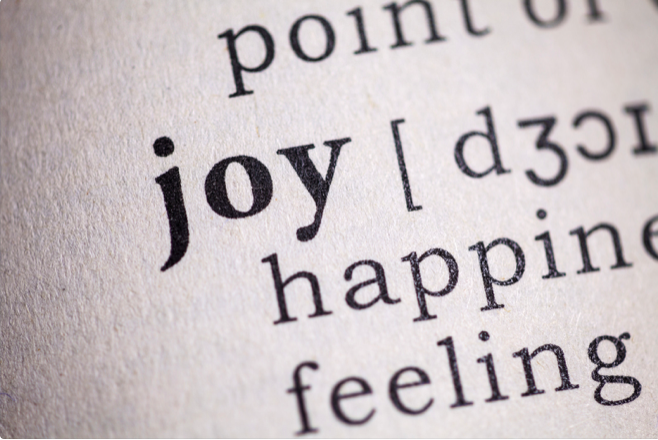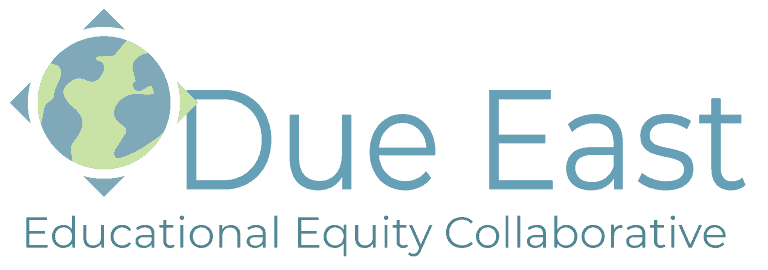Honoring Joy in Anti-Racism Curriculum Reform
Every day for white educators like myself, there are countless things to do in working toward becoming more anti-racist. Listening to and reading the words of Black people and other members of the global majority. Donating financially to support communities and initiatives of color. Monitoring and editing our social media feeds for knowledge and escaping our intrinsically biased echo chambers. Having difficult conversations with friends and family members about white supremacy. Maybe losing some of those friends. Constantly gaslighting one’s motivations and endurance in this work. Oh, and don’t forget! Don’t forget about anti-racism actions and efforts in the classroom–is our curriculum representative? Do we amplify the voices of our Black and brown students? Do we have relationships with families based on trust and mutual love of their children? Do we have our administrator’s support, and if not, how do we still proceed in this work?
Anti-racism is serious business. It’s challenging and never-ceasing and is often confusing. But it also contains something within it that we white educators often overlook–it contains joy.
Last night I had the opportunity to participate in a webinar focusing on anti-racism in the classroom. During the session, I was reminded yet again of something I wasn’t aware of even a year ago—the essential importance of allowing and providing opportunities for JOY in the anti-racism curriculum and classroom. As someone who has been living in a rage-fueled flurry of action steps since last spring (I know, I know—not sustainable OR healthy and maybe sometimes bordering on performative? Am I truly working toward anti-racism? Am I doing it right? How are people interpreting my actions?), it has taken more than one person, both virtually and in person, to get me to tap the brakes and actually consider the curricular choices my teaching colleagues and I have made just within the last year and how we need to reframe these choices with student-forward collaboration that is based in anti-racism but also JOY.
There are many ways to manifest and support joy in anti-racism work in a classroom community, but here I will be focusing on curricular choices and development, since it is what many of us educators feel we can focus on as a starting point. I believe we can make significant changes to lessons surrounding any text that we utilize in a class, whether it is a text we’ve been teaching for generations (a.k.a. The Lord of the Flies) or something brand new (a.k.a. The Hate U Give). I fully realize that both budgets and school climate play a large role in the texts we have access to using. At the same time, we need to also be aware that simply because a text is recently published by a Black author does not mean it is exempt from being taught in a way that continues to support the dominant narrative. By dominant narrative, I mean utilizing explanations, stories, or a historical lens that supports the group that holds the most power within a culture. In our case in the United States, this refers to White, male, and heteronormative perspectives and interpretations.
To focus on amplifying and manifesting joy, I turned to a few questions that can be found on the Due East Lesson Planning Template to help me brainstorm how things can go differently this school year. Here is just a sampling of how I used this tool:
How does this unit or lesson reflect the students who are learning the content?
How is this unit or lesson relevant to students who are learning the content?
How does this unit or lesson center the needs and voices of traditionally marginalized students?
We teach Another Brooklyn by Jacqueline Woodson. This beautiful and poetic text centers around a group of young girls growing up in Brooklyn during the 1970’s. The book checks a lot off the list: representative Black female author, protagonists of a similar age group to student readers, discussion of topics of interest to students including music, dating, sexual awakening/consent, abuse, and family conflict/resolution. However, the book has tragic (and perhaps stereotyped?) endings for many of the characters, and to describe the text as JOYFUL (at least how we first taught it) feels like a really difficult stretch. But all hope is not lost! I’m using the lesson planning template questions to help me formulate ideas to engage students in co-creation of new ways to experience this book and corresponding unit.
What biases, misrepresentations, or dominant narratives are present in this unit or lesson?
We so often think about dominant narratives as centering white stories and characters. However, a dominant narrative can also be the biases and misrepresentation of the Black girls and adults who are the characters in this book. And how about gender representation—the book contains multitudes of stereotypes about Black teenage girls. How does the lens of white supremacy impact our interpretation of the actions and eventual outcomes of these characters? I mean, whiteness itself is a huge part of how and and why the characters end up in the situations that they do. So, how to acknowledge that AND be critical of it at the same time? Whew. That’s real!
So how do my students see whiteness in this book? How do they relate? Do they agree or disagree with the racial and gender characterizations, and why? Why do we surmise Woodson made the literary choices she did?
And where is the joy?
As educators working toward anti-racism, we are constantly changing and updating our approaches and techniques to the texts we currently have access to. One successful activity we’ve used in this unit is to have students practice close-reading skills by placing a sticky-note with a personal question and/or response on a specific amount of pages in each reading assignment. I’d like to modify this activity to better hone in on student experiences and memories that address their joys of being who they are, despite the challenges….this practical activity is a good starting point for conversations and critical thoughts, but it needs something more and I found it a few days ago.
I recently had the chance to participate in yet another webinar that featured well-respected and well-known educators from the global majority whose work is quite famous in anti-racism circles. The white host of the event initially had a list of questions to ask the panel, but quickly the conversation left the typically very serious topic of developing anti-racist schools and became a conversation about…music. What they used to listen to, what they listen to now, what music they’d share with their students and colleagues, which artists are important today and always in anti-racism work. These panel members allowed JOY into a conversation, and more than that, allowed the large audience of educators to see what serious AND joyful AND sustainable conversations about anti-racism look like.
That’s when I finally realized something –Jacqueline Woodson, author of Another Brooklyn, did the same exact thing. She shared songs and artists from her years of growing up young, black, and female throughout the text, often overlapping and interspersing the song titles with some of the most challenging and painful aspects of the stories. She, too, shared joy amidst struggle, brightness and light in the darkness. Our students do the same–they always have songs in their heads, coming out of their mouths, lyrics memorized to harmonize with others as they walk down the hall. This is where we can co-construct knowledge in all kinds of ways–what songs create meaning for students? Which artists would make the best soundtrack for their lives? This book? Can they themselves create or find the perfect song to represent the characters in the text?
How does this unit or lesson honor and utilize family expertise?
This is something that has been largely overlooked in this unit, even though the driving force behind the storyline is FAMILY. We’ve focused so diligently on students engaging in a very personal way with the text that we have missed via omission all of the valuable knowledge and expertise parents and other family members may have. What do they know about growing up in the decades before our students? How did they engage with growing up within the potential restraints of “boy” or “girl” as adolescents? Where and how did they find JOY in growing up? And how about right now? These are obviously very personal issues, but it’s a place to start brainstorming about how to include familial expertise!
How to start this? Go back to music. What does their grandmother listen to? Their older brother? What is dad’s most embarrassing song he admits he actually likes? What are the stories of dance and music in their family? Do family members who grew up in the 1970’s know any of the songs Woodson shares in the text? And on and on and on…the connections and relatability are everywhere!
This is just a small example of how we can begin to re-frame and re-center our curriculum to better include and represent our students using a template that utilizes an equity lens. There’s much more work to be done, that’s certain. But I find it helpful when I’m spinning in a hundred directions while sitting still (I’m not the only one, right?) to pull one or two questions to help me really center and focus the work that needs to be done. It’s a continuous process—we’re never done, but honestly, that’s part of the JOY of student-focused collaboration!


